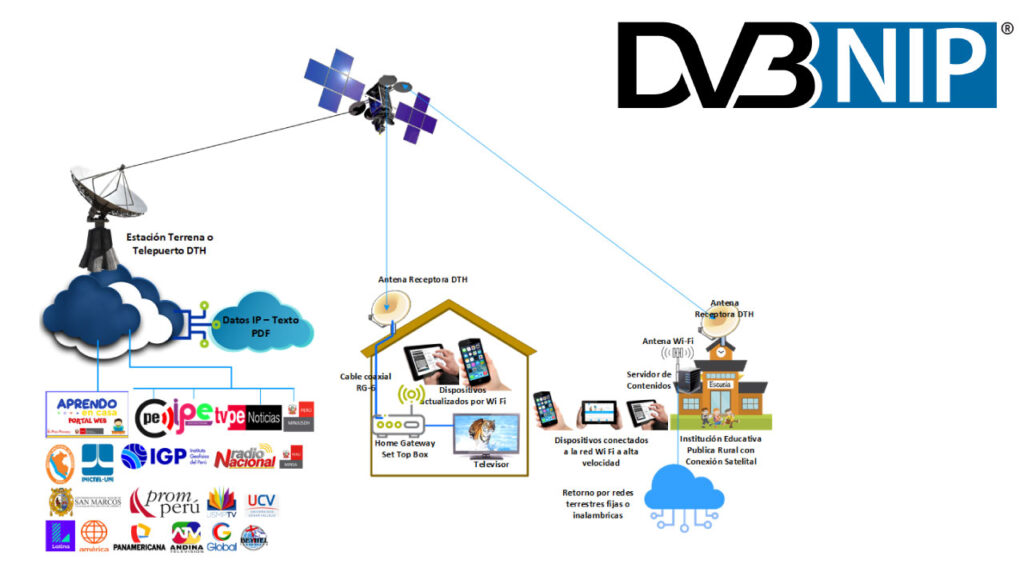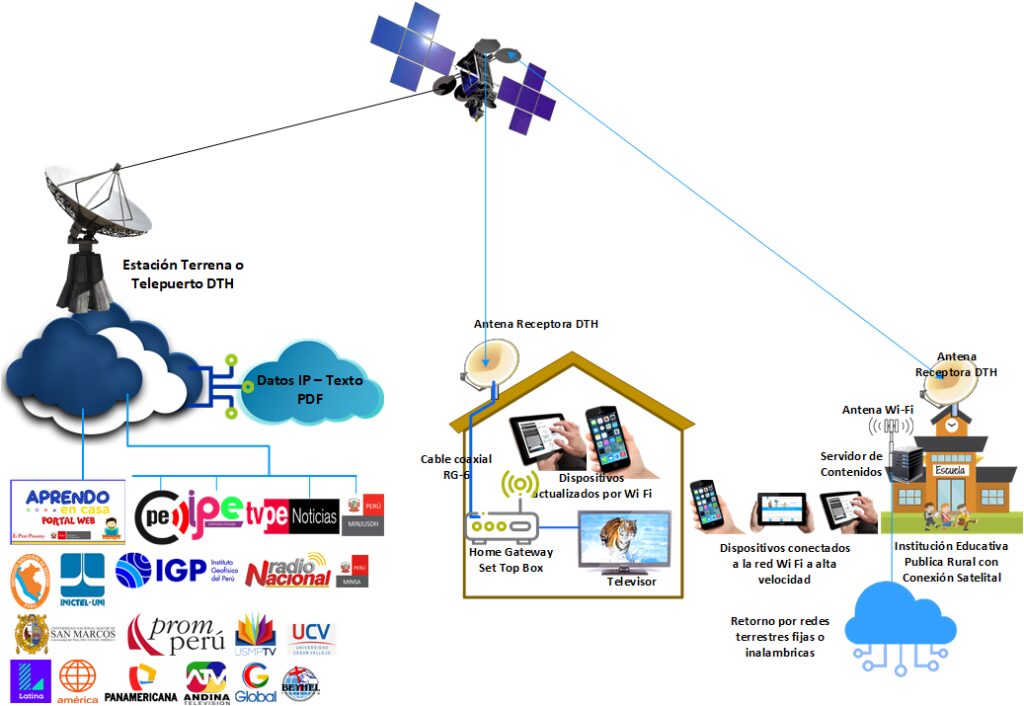
Using DVB-NIP to close the connectivity gap in Peru
Wildfredo Baro Fanola Merino (Universidad Nacional Mayor de San Marcos)
During the COVID-19 pandemic, the Peruvian government realized that it had no effective means of communicating critical public health news to the entire population, nor could it ensure the provision of distance learning to the approximately 30% of the Peruvian population without connectivity.
Standards-based
In 2022, a tender was issued by the National Institute of Radio and Television of Peru (IRTP) with the aim of addressing these connectivity gaps, taking advantage of satellite distribution to be able to reach the most remote corners of the country. Importantly, to avoid the risks of vendor lock-in and leverage the advantages a standards-based approach, the tender specifically requested the use of the new DVB specification for Native IP Broadcasting, DVB-NIP.
Building on many different existing DVB standards, notably DVB-MABR for multicast adaptive bitrate streaming, DVB-NIP allows the delivery of live television channels, video-on-demand, and documents or other files, all receivable on a range of devices from smartphones up to big screen displays. This is especially relevant in countries, like Peru, where households may have multiple screens but no internet access.
The solution selected by IRTP comes from a consortium of companies under the SKYflow brand. The partners in this ecosystem are ST Engineering iDirect, EKT, Quadrille and EasyBroadcast.
Launched in early 2024, the project involves a multi-phased implementation, starting with live video, including public broadcasting. File- based delivery, including content from the Peruvian Ministry of Education to support distance learning, will follow later in the year. The project is being co-managed as a system integration by DIVICAM and ST Engineering iDirect. Eutelsat Group was chosen to deliver satellite capacity for the project.
DVB-S2X is used for the satellite transmission, in the Ku-band. The new set-top boxes – which function as DVB- NIP gateways – can provide return-channel connectivity via terrestrial networks, whether fibre optic, mobile, etc. This two-way broadcasting would expand the use cases available to the Peruvian government in the future.
The service for schools would include sufficient storage capacity to allow the delivery of files and would take advantage of the return channel.
Social inclusion
The illustration below shows how every household in Peru, everywhere throughout the country, can have the same number of channels, the same HD signal quality, and above all access to content of all kinds. We can imagine offering distance education from any university in the most remote parts of Peru. I believe that this is how we can achieve true social inclusion and, of course, the digital transformation we have talked about so much, but which still does not involve households in remote places.

The efforts of the IRTP’s Executive Presidents, initially by Dr. Joseph Dager and then by his successor Mag. Jesús Solari Díaz, have given viability to this new proposal to close the gap in broadcasting coverage and address a very important issue for Peru, access to content for all households regardless of geography, distance or accessibility.
Delivery of the complete vision, with an electronic programme guide that includes all actors who create content, will require a further political decision and the agreement of private parties to contribute to the expense of deploying the receiving terminals and to the expense of renting the satellite segment.
Wildfredo Baro Fanola Merino is a lecturer in the Faculty of Electronic and Electrical Engineering at the Universidad Nacional Mayor de San Marcos in Lima, Peru. He is also General Manager of Sociedad Tecnológica del Perú SAC and Director of Operations of American Telecom Company SAC.
This article first appeared in issue 63 of DVB Scene magazine.
